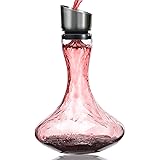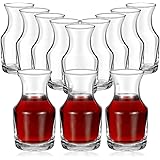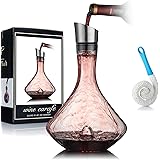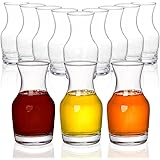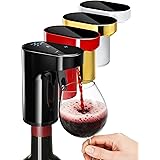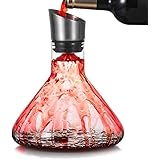Choosing the Right 30-Bottle Wine Starter Kit: Premium, Superior, or Luxury?
Selecting the appropriate wine starter kit is a foundational step for any aspiring home winemaker utilizing pre-formulated wine kits. The video above offers an excellent visual tour of our 30-bottle Premium, Superior, and Luxury wine starter kits. This detailed guide expands upon that visual introduction, delving into the specific components and functional advantages of each kit. Our goal is to empower you with the knowledge to select the perfect setup, ensuring a successful and enjoyable winemaking journey.
Understanding the Foundation: Essential Winemaking Equipment
Regardless of the kit chosen, certain pieces of equipment are non-negotiable for producing quality wine. These core items ensure fermentation proceeds correctly and your wine remains untainted. Their proper use is fundamental to home winemaking success.
The Hydrometer: Your Gravity Guide
A hydrometer is an indispensable tool, measuring the specific gravity (or “thickness”) of your liquid. This measurement indicates the sugar content before fermentation and alcohol content afterward. It’s not merely a gauge for readiness; it precisely tracks fermentation progress, allowing you to prevent a stalled fermentation or confirm completion. Richard emphasizes its “absolute must-have” status, and at approximately £4, it’s a minor investment with major returns in analytical capability. We provide a separate, in-depth guide on hydrometer use, but understanding its role in tracking fermentable sugars and estimating final alcohol by volume (ABV) is critical.
The Thermometer: Temperature’s Crucial Role
Yeast is a living organism, and its performance is highly sensitive to temperature. The thermometer provides a precise reading of your liquid’s temperature. Most wine kits specify an optimal range, typically between 20-25°C, for yeast pitching. Maintaining this range ensures healthy yeast activity, proper sugar conversion, and the prevention of off-flavors. It’s also vital to monitor room temperature during fermentation, though it’s important to remember the liquid temperature within your fermenter will often be 2-3 degrees Celsius higher due to the exothermic nature of yeast converting sugar to alcohol.
Sterilizer: The Guardian Against Contamination
Hygiene in winemaking cannot be overstated. “Every single thing that comes into contact with the wine… needs to be immaculately clean.” This isn’t just about cleanliness; it’s about sterilization. Our chlorine-based sterilizer effectively eliminates wild yeasts, bacteria, and molds that could spoil your batch. It’s recommended to use approximately 5 liters of warm water with a large spoonful of sterilizer in your primary bucket. Ensure all equipment – airlocks, siphons, mixing spoons – are thoroughly submerged and sterilized. Always rinse chlorine-based sterilizers thoroughly after use to prevent chemical residues from affecting your wine’s flavor. Exercise caution when handling, ensuring it doesn’t come into contact with your face.
The Siphon: Gentle Liquid Transfer
A siphon facilitates the gentle transfer of clear liquid (racking) from your fermenter to another container or directly to bottles, leaving sediment behind. The principle is gravity-fed: the receiving container must be positioned below the source. Siphoning minimizes aeration, which is crucial for preventing oxidation and preserving your wine’s delicate flavors. Our siphons include a sediment trap, ensuring only the clean wine is transferred.
The Premium Wine Starter Kit: Your Entry Point to Home Winemaking
The Premium kit is designed as a robust entry-level solution, providing the essential tools to embark on your winemaking journey. It’s a comprehensive package for initial fermentation.
- 30-Liter Graduated Bucket: This serves as your primary fermenter, offering a maximum fill volume of 25 liters. Its graduation marks simplify precise liquid measurement.
- Airlock & Grommet: The airlock fits securely into the lid via a grommet, allowing carbon dioxide (CO2) to escape while preventing airborne contaminants from entering, maintaining an anaerobic environment crucial for fermentation.
- Mixing Spoon/Paddle: Essential for thoroughly dissolving ingredients and degasifying your wine.
- Hydrometer & Thermometer: As discussed, these are critical for monitoring and controlling the fermentation process. The hydrometer’s protective case doubles as a trial jar for accurate readings.
- Chlorine-Based Sterilizer: A generous tub ensures you can maintain impeccable hygiene.
- Basic Siphon with Sediment Trap & Bucket Clip: This gravity-fed siphon features an extendable tube and a sediment trap. The included bucket clip secures the siphon, allowing hands-free operation. An on/off tap on the siphon is convenient for bottling directly, though a second container is highly recommended for racking.
- Instructional DVD: Authored by Richard Blackwell, this DVD provides invaluable guidance across wine, beer, and spirit making, covering crucial aspects like hydrometer use, temperature control, and sterilization in greater detail.
A key consideration for the Premium kit is the need for a second container for racking or careful direct bottling. While possible to bottle directly, transferring clear wine to another vessel before bottling significantly reduces sediment transfer and overall complexity.
Stepping Up: The Superior Wine Starter Kit Advantage
The Superior wine starter kit builds upon the Premium foundation by addressing a common challenge in home winemaking: the need for a secondary fermentation vessel. This kit is a significant upgrade for those seeking more flexibility and ease in their process.
The primary addition is a second 25-liter plastic fermenter. This plastic fermenter is highly versatile. It features a convenient 4-inch lid, a bung, and a second airlock. While both the original bucket and this new fermenter can be used for primary fermentation, many experienced winemakers prefer to start fermentation in the larger bucket for initial vigorous activity. The secondary fermenter is then ideal for racking the wine off the initial yeast sediment for a clearer product and subsequent aging. It excels with “quicker wines” where extended aging in the vessel isn’t a long-term goal. However, due to potential headspace, it’s not ideal for long-term storage beyond 6-9 weeks, as excessive air exposure can lead to oxidation and spoilage.
All other essential tools from the Premium kit – hydrometer, thermometer, sterilizer, siphon, and DVD – are also included, maintaining the high standard of equipment.
Mastering Quality: The Luxury Wine Starter Kit Experience
For the discerning winemaker who prioritizes quality and optimal aging conditions, the Luxury wine starter kit represents the pinnacle of our offerings. This kit is specifically tailored for higher-quality wine kits, such as Vintner’s Reserve, World Vineyard, and Selection, where long-term aging is often desired.
The defining feature of the Luxury kit is the inclusion of a 23-liter clear glass carboy. This replaces the plastic fermenter found in the Superior kit. Glass is preferred for secondary fermentation and aging, particularly for longer durations, due to its non-porous and inert nature. Crucially, a 23-liter carboy perfectly matches the volume of most standard wine kits, virtually eliminating “headroom.” Headroom, the empty space between the wine surface and the bung, introduces oxygen, a primary cause of oxidation and off-flavors during extended aging. With no headspace, your wine remains protected.
Beyond the carboy, the Luxury kit elevates several other components:
- Dedicated Trial Jar: More substantial than the hydrometer’s case, this trial jar offers a wider opening, making hydrometer readings significantly easier and more accurate.
- Digital Strip Thermometer: This adhesive strip can be applied directly to your fermenter, providing an immediate and convenient reading of the liquid temperature. Remember, liquid temperature typically runs 2-3 degrees Celsius higher than ambient room temperature during active fermentation due to yeast activity.
- Auto-Pump Siphon (Easy Flow Siphon): This advanced siphon eliminates the need for manual sucking to initiate flow. A simple up-and-down pumping motion starts the siphon easily. It includes a specialized clip for hands-free operation and a flow clip on the discharge end, allowing you to stop and restart the flow without breaking the siphon, which is invaluable when bottling.
This kit is ideal when fermenting and aging times extend between 4 and 8 weeks or longer, ensuring your better-quality wines develop their full potential in an oxygen-free environment.
Beyond Fermentation: The Importance of Bottling Your Homemade Wine
While the starter kits provide everything for fermentation, the bottling process is a separate, yet equally critical, stage. We strongly recommend adding a bottling pack to your order to complete your winemaking setup.
Our bottling starter pack is an add-on, featuring four key items:
- Corking Machine: This device effortlessly inserts corks into your wine bottles. We stock different types, but all perform the same vital function: creating a tight, secure seal.
- Silicone-Sealed Corks: These specially designed corks feature a silicone seal, simplifying insertion and ensuring a reliable closure. A light rinse before use is recommended to remove any dust; soaking, a practice from “the olden days,” is no longer necessary and can actually hinder performance.
- Shrink Capsules: These caps add a professional finish to your bottled wine and provide an extra layer of seal. Simply place a capsule over the bottle neck and shrink it using steam from a kettle or a hot hairdryer until it conforms tightly to the bottle.
- Labels: Personalize your bottles and keep track of your batches with included labels. Packs typically contain 26-30 labels. If you order a wine kit simultaneously, we often try to match labels to your specific wine variety.
Purchasing these items as a bottling starter pack offers significant cost savings compared to buying each component individually. It’s an essential step to properly preserve and present your homemade wine.
Expert Tips for Optimal Home Winemaking Success
As you embark on your home winemaking adventure with these robust wine starter kits, remember these fundamental principles for consistent quality and enjoyment:
- Obsessive Hygiene: Reiterate the importance of meticulous sterilization. Any contamination can ruin a batch, leading to off-flavors, cloudiness, or complete spoilage. Sterilize every piece of equipment that touches your wine before and after use.
- Precise Temperature Control: Your yeast’s health directly impacts your wine’s flavor. Fluctuations outside the recommended 20-25°C range can stress the yeast, leading to sluggish fermentation or undesirable by-products. Use your thermometer diligently, and consider a stable environment for fermentation.
- Patience is a Virtue: Winemaking is not a sprint. The typical fermentation and initial aging period for wine kits ranges from 4 to 8 weeks, but many wines benefit significantly from further aging in carboys and bottles. Resist the urge to rush the process; good things come to those who wait.
- Minimize Oxygen Exposure: While some oxygen is needed at the very start for yeast health, after pitching, oxygen becomes the enemy. During racking and bottling, work efficiently to limit your wine’s exposure to air. This is where the reduced headspace in a 23-liter carboy for a 23-liter kit becomes invaluable for preventing oxidation.
- Long-Term Storage in Glass: While plastic fermenters are suitable for primary and secondary fermentation (especially for “quick wines”), for anything beyond 6 to 9 weeks of storage, always transfer your wine to glass carboys or wine bottles. Glass is impermeable and inert, offering the best conditions for extended aging without imparting plastic flavors or allowing oxygen ingress.


